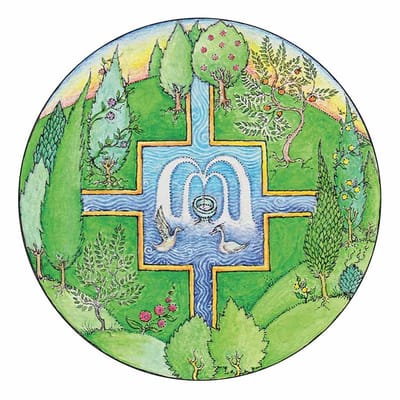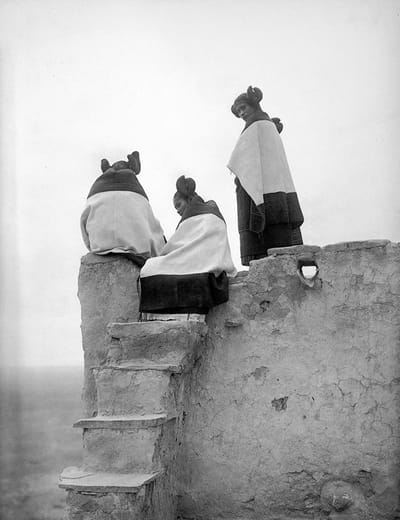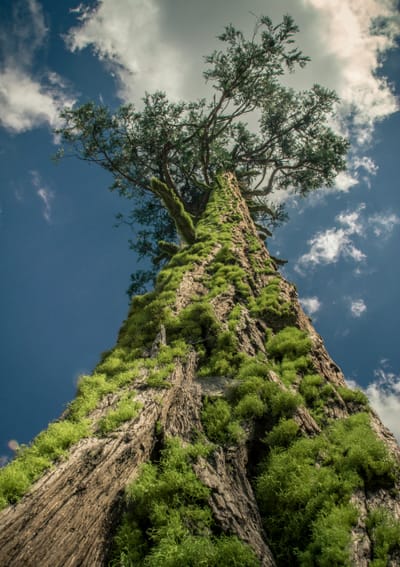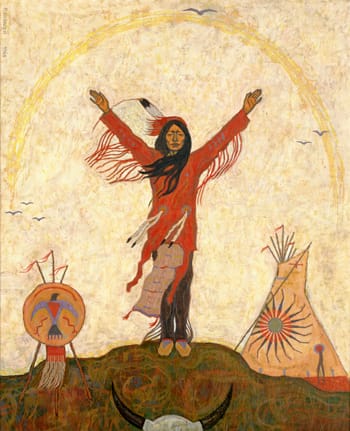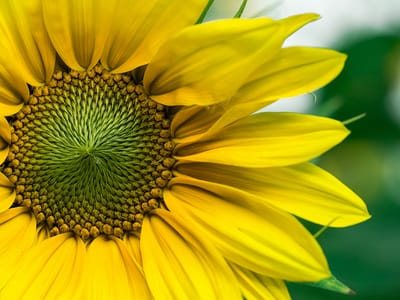All stands in two worlds, and the ground Of Paradise is everywhere.
— Kathleene Raine
The Rose spoke; it was like the clear chant of the angels...
Because I alone am a native of the Old Garden...
Because in my blossom is hidden the Great Mystery,
Because I waft abroad the sweet odours of Paradise,
Ancient relics of the lost Kingdom.
— Arthur Machen
The word Eden signifies ‘Delight’, the blissful beatitude which characterizes the sacred Centre, the ‘Primordial’ estate of Adam before the Fall, when he dwelt in the heart of God. Since the expulsion of Adam and Eve from the Edenic state, the spiritual history of man is a chronicle of exile and travail. Throughout the ages humankind has been veritably haunted by the pervasive sense of loss and ‘nostalgia for Paradise’, and so the Chinese poet Li T’ai‐Po (d. 762), upon hearing the floating call of a jade flute at evening in the mountains, asked: ‘To whom does it not bring back the love of his old, early garden?’ The traditional arts and crafts have always given expression to this innate longing. William Blake described painting, poetry and music as ‘man’s three ways of conversing with Paradise’, ways of witnessing the profound yearning of the soul for its return to the ancient Garden of its pre‐existence.
The sacred arts of the Islamic, Judaic and Christian civilizations provide an immense richesse of symbolic traditions and metaphysical lore regarding the Garden of Paradise, for example through the schools of Christian hermetists, Sufi initiates and Kabbalistic sages in medieval Spain.The classical Moorish and Persian gardens of the Chahr-Bagh pat‐ tern evoke the archetypal Paradaeza, the walled garden of Indo‐Iranian tradition, echoing the Var or central enclosure of the god Yima of the Mazdeans. In the Zend Avesta, it is written that Yima ‘made waters flow in a bed a hâthra long; there he settled birds, by the evergreen banks that bear never‐failing food...that Var he sealed up with the golden ring, and he made a door, and a window self‐shining within.’[[1]] Situated in the central ‘clime’ (keshvar), at the centre of the world, this terrestrial paradise and garden‐enclosure is the locus of the luminous Eran Vej, the ‘Earth of Visions’, Terra Lucida from whence is secreted the radiance of the ‘Light of Glory’ (Xvarenah).
According to such authorities as St. Basil and St. Ambrose, the Garden of Paradise is located upon the summit of a lofty mountain which ascends to the sphere of the Moon—its elevation thus ensuring its preservation from the floods, mutations and dissolutions of the sublunary sphere below, and the Garden is untouched by time, death or decay. This is why according to Abd al‐Karim Al‐Jili (d. 1424), the prophet Adam is identified as the ‘Pole’ of the Heaven of the Moon.
[[1]]: Zend Avesta, Fargard of Yima II v. 34‐38
